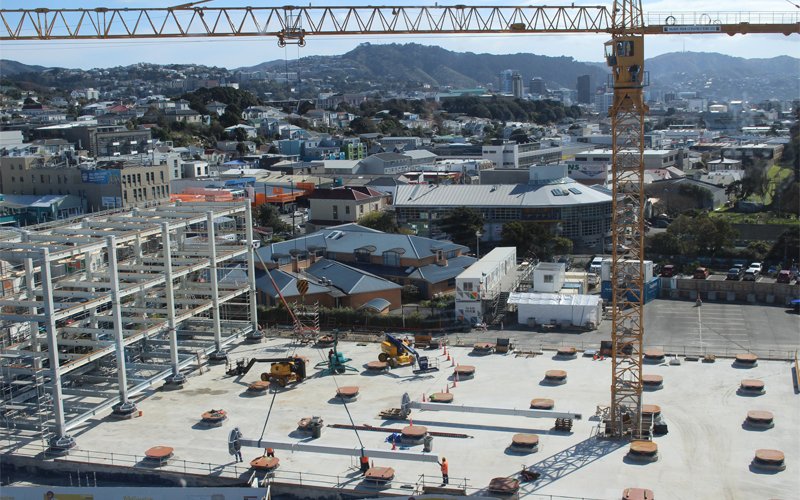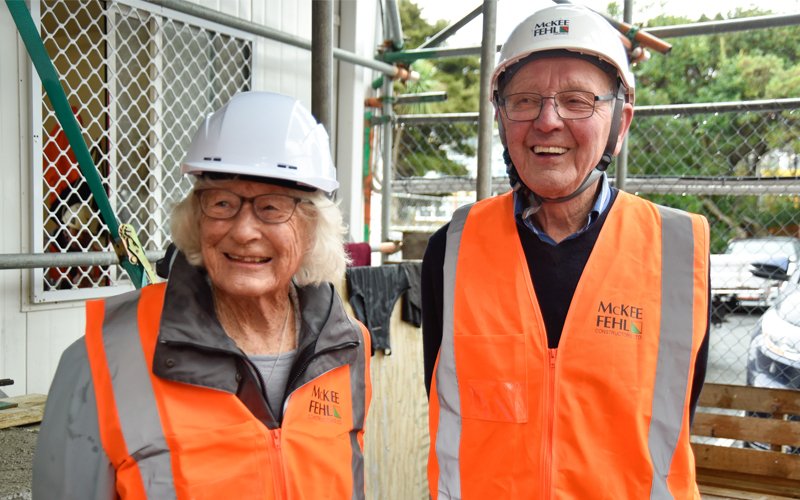30 Jun 2023
It was a coup for Wellington when philanthropist Sir Mark Dunajtschik donated $53 million towards building Te Wao Nui, a new children’s hospital for the region. Opened in October 2022, it features unique engineering design that will ensure the world-class healthcare facility is built to last.
Before the first sod was even turned, engineers had their work cut out for them. The site on which the new hospital was to be built had housed numerous buildings over the years, leaving behind a legacy of soil contaminated with asbestos and other construction waste.
Marcus Welby, Buildings Mechanical Practice Leader at Aurecon, oversaw the project’s civil and building services.
“We needed to replace a historic brick culvert buried beneath the footprint of the building with a new, modern polyethylene pipe. But the ground was highly contaminated – we had to find a way to do it with minimal disturbance to the soil.
“It was full suit and boot, bagging the contaminants, removing them safely and carefully from the site to landfill before proper work onsite could even begin.”
Another complexity was that the site lies in an old river gully that acts as a natural flood pathway.
We ended up designing the building to purposely flood underneath by diverting water through an underfloor cavity, away from the main part of the hospital.
“Obviously we didn’t want the water to go directly through the building, but the concern was if it can’t go through the building it would end up in adjacent sites, also causing issues,” says Marcus.
“We ended up designing the building to purposely flood underneath by diverting water through an underfloor cavity, away from the main part of the hospital.”
The soil contamination also made it difficult to remove the fill to build the foundations, says Jonathan Kearney MEngNZ, a structural engineer at New Zealand Consulting Engineers.
“Usually the fill is removed and goes to landfill, but because of the soil contamination a lot of landfills around the city couldn’t accept it. So we ended up changing the design to have the foundation on top of rather than in the ground.
“There were also a number of reinforced concrete pads in the ground from previous buildings that were on the site and we needed to locate them to make way for the foundations. Aurecon carried out a sonar survey to locate the pads so that the foundations could fit around them.”

North-facing exterior under construction. Photo: Andy Spain
Increasing sustainability
The prefabricated glass façade on the link bridge that greets visitors as they enter the hospital campus was recycled from an earthquake-damaged Wellington building. It’s a novel detail that reflects how sustainability was built into the building’s overall design.
“Heat recovery was a key area where we could make sustainability gains,” Marcus says.
“In a hospital, there’s huge demand for domestic hot water. To reduce energy consumption, we designed a system that captures waste heat from the hospital’s chillers and uses it for preheating the domestic hot water. Keeping energy consumption down in this way obviously has benefits from a sustainability perspective but also keeps operational costs down.”
Equipped for earthquakes
Beneath the building are 45 base isolators designed to allow two-directional, horizontal ground movement of 1.5m. The seismic protection makes the building able to withstand a one-in-2,500-year earthquake, and to be usable after a one-in-500-year event.
“The idea is you can get the building functioning again after 72 hours, getting all the water, all the services, reconnected. To achieve that, you need to limit the accelerations in the building,” Jonathan says.
“[Sir] Mark was very keen on the triple pendulum base isolator and travelled to the California plant where they’re made to take a look.
“The triple pendulum base isolator was selected because it’s very good at reducing accelerations – it’s a very slippy, slidey thing, not as stiff as some lead rubber bearings are. On top of the isolators, there’s a stiff moment-resistant frame that limits the drift when a one-in-500-year event strikes. That means not a lot of damage when the rest of Wellington might be levelled.”

5 base isolators were put in place, allowing two-directional, horizontal ground movement of 1.5m. Photo: Wellington Hospitals Foundation
A hospital’s services – encompassing everything from water, medical gasses, fire and security systems, call buttons and lighting, to heating, ventilation and air conditioning – are critical to keeping it functioning. Being in a seismically active city, particular care was paid to the design of Te Wao Nui’s services. Ignatius Black CMEngNZ, Regional Manager at Silvester Clark, was responsible for designing the seismic restraints for the services.
“McKee Fehl [the project’s contractor] identified that it was important to consider and allow for seismic restraints early on in the project. The restraint systems used were designed to be efficient. In congested areas suspended cradle frames were used, while in less congested areas services were restrained individually. For the cradle frames we used the Sikla Framo, a metal framing system with componentry that enables ease of connection. These frames were designed to provide both lateral bracing and gravity support.
“An advantage of the cradle frame approach, compared to restraining services individually, is that this frees up space considerably. It also helps future-proof the project by allowing space for additional services to be added later.”
A children’s environment
The hospital opened to its first patients in October 2022, bringing together all child health services that were previously located in different parts of Wellington Regional Hospital. Wellington Hospitals Foundation worked with the community to raise $10 million to outfit and equip the hospital’s spacious interior, which includes designs created by Weta Workshop.
“Being a children’s hospital made this a special project to be involved in,” says Jonathan.
“It’s a fresh approach to hospital design, one that makes it feel like a children’s environment rather than a clinical one.”

Dorothy Spotswood and Mark Dunajtschik. Photo: Wellington Hospitals Foundation
Thanks to a benefactor
Born in Germany, Sir Mark Dunajtschik arrived in New Zealand in the 1950s as a toolmaker. He started and ran engineering businesses before moving into property development. He has contributed to a range of philanthropic causes, including a recently announced $10 million to set up a mechanical engineering department at Te Herenga Waka–Victoria University of Wellington. He was knighted in the 2023 New Year Honours for services to philanthropy.




